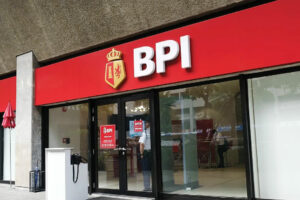
BPI eyes regular bond issuances amid market demand
BANK of the Philippine Islands (BPI) may issue another peso bond next quarter as it hopes to launch regular offerings amid strong market demand, its top official said.
“We want to do it. It’s something that we’re thinking about. There’s no firm plan because the issue we just did reached about P30-33 billion, so we’re kind of full. But the idea really is to eventually come to a point where we have a regular flow of bonds because the market needs it,” BPI Chief Executive Officer Jose Teodoro K. Limcaoco said at a briefing on Thursday.
Mr. Limcaoco was referring to the bank’s offering of 1.5-year peso-denominated Sustainable, Environmental, and Equitable Development or SEED Bonds, which ended on Thursday.
The bank wanted to raise at least P5 billion from the offer, which ended a day earlier than originally planned amid robust demand.
“When you take a look at the different businesses, a lot of our demand comes from the wealth side. A lot of demand comes from the branches. If it’s cost-efficient, why don’t we do it this way because it’s what the customers want anyway. We can split the cost with them. So, we can get a better yield at a lower cost,” he added.
For his part, BPI Treasurer and Global Markets head Dino R. Gasmen said it would be a challenge to issue bonds regularly as this would also depend on the bank’s current funding needs.
“We might not need funding by the next quarter, so that will stop us from issuing,” Mr. Gasmen said. “So, it’s a plan. It’s a challenge for us. The cost advantage is big, so if we can issue more, the better.”
It would also be difficult to issue sustainability bonds every quarter as “we don’t know if assets will come in as we expect,” he added.
“It’s hard to be short of sustainable assets because it’s just one-and-a-half years. Other bonds are five years. At least those have a longer time to fill up and fulfill the use of proceeds. We don’t want to be short of assets… so, we want to be careful there as well,” Mr. Gasmen said.
NARROWING MARGINS
Meanwhile, Mr. Limcaoco said the bank will continue to increase the share of non-institutional loans in its total loan portfolio to help offset the expected compression of its net interest margin amid the Bangko Sentral ng Pilipinas’ (BSP) upcoming monetary easing cycle.
“I think margins over time will compress. That’s a reality. As rates go down, margins will compress, and we have to make it up by volumes, to shifting your portfolio to loans which are less sensitive to policy rates… Things like auto loans, or mortgages are less sensitive. They react much later. That’s why for us, it’s about shifting more of our portfolio into consumer loans,” he said.
The bank hopes to eventually have 30% of its loan book come from non-institutional clients, Mr. Limcaoco added.
“Maybe two years ago, we were 76% or 77% corporate loans, and now we’re at 26% retail loans and 74% corporate loans. But the goal is to get it to 30%,” he said.
“We all know the economy looks very positive, so the top corporations will also be borrowing. We have to lend a lot more to the consumer side… It’s not an easy job,” he added.
Still, their margins may not narrow by much yet as the BSP is only expected to cut rates by 50 basis points (bps) this year, or two 25-bp deductions this quarter and next, Mr. Limcaoco noted.
BPI’s net income grew by 17.5% year on year to P15.3 billion in the second quarter, driven by higher revenues.
Its shares went up by P3.50 or 2.89% to end at P124.80 apiece on Thursday. — AMCS



